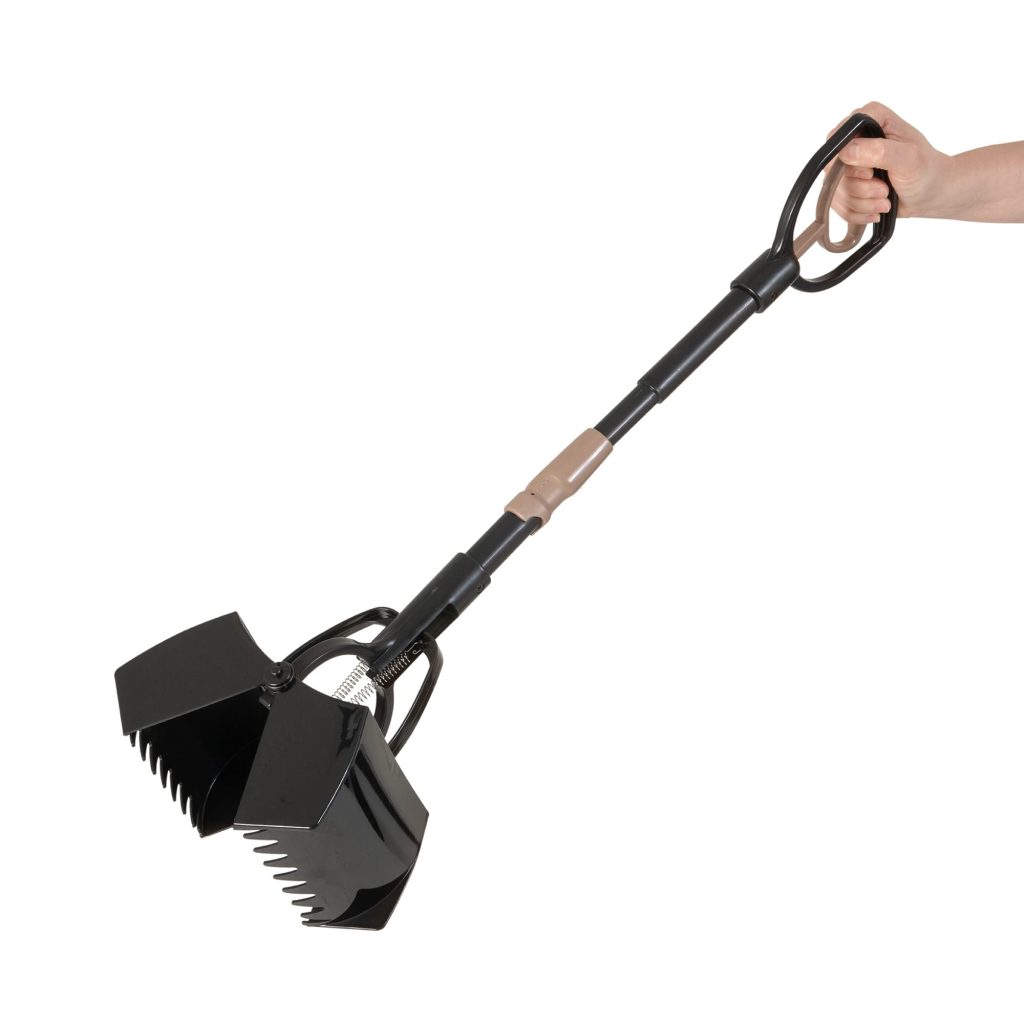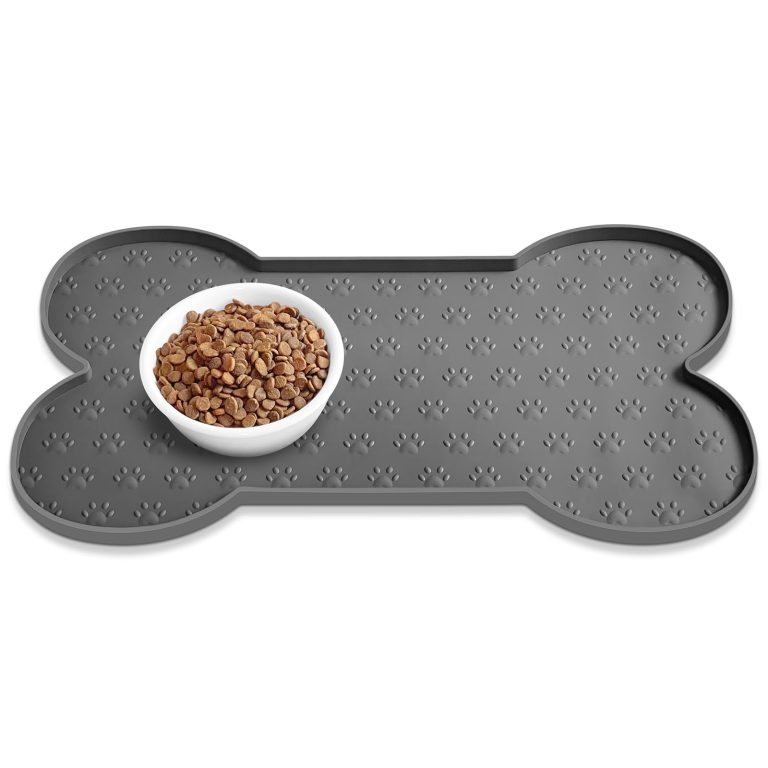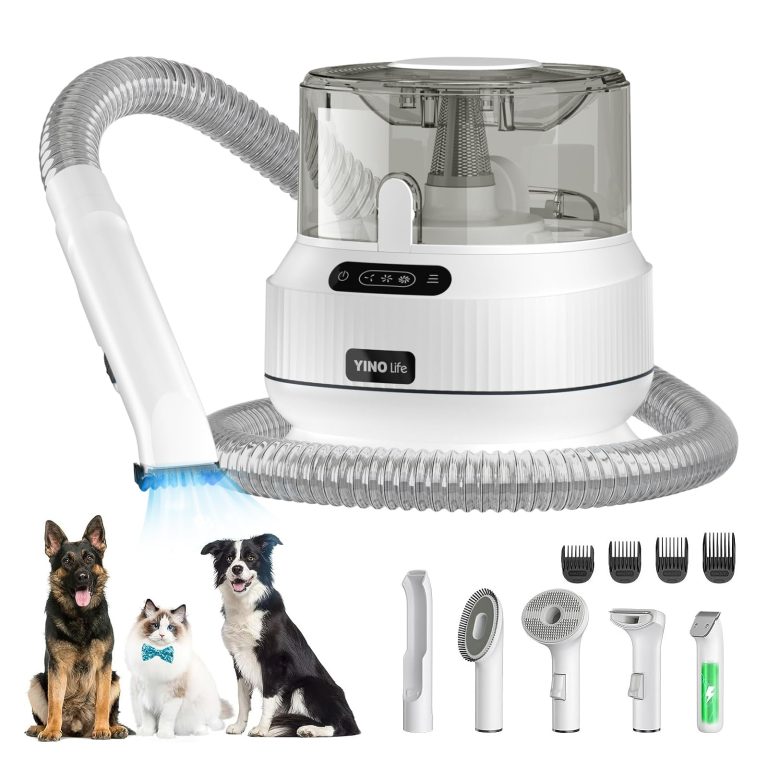Canine Arthritis – Recognizing and Managing Joint Pain

Canine arthritis represents a prevalent and often underestimated affliction that can significantly impact a dog’s quality of life. Unlike a singular condition, arthritis encompasses a variety of joint disorders, the most common of which is osteoarthritis, commonly referred to as degenerative joint disease. This ailment arises when the cartilage cushioning the joints deteriorates, leading to inflammation, pain, and a range of mobility issues. As the cartilage wears away, the bones may come into direct contact with each other, resulting in further discomfort and restricted movement.
One of the primary challenges in understanding canine arthritis lies in its varying presentations, which can often mask themselves as simple signs of aging. Many dog owners may dismiss their pet’s reluctance to engage in vigorous play or its occasional limping as mere ‘old age’ behavior, yet these changes may indicate the onset of joint issues. It very important to recognize that even though arthritis predominantly affects older dogs, it can also occur in younger dogs due to previous injuries or genetic predispositions. For example, breeds such as Labrador Retrievers, German Shepherds, and Bulldogs appear particularly susceptible to developing arthritis at an earlier age.
To truly appreciate the intricacies of canine arthritis, it’s imperative to familiarize oneself with the factors that contribute to its development. Obesity ranks high on this list, as excess weight places undue stress on the joints, exacerbating the wear and tear on cartilage. Moreover, dogs that have undergone surgery for hip dysplasia or ligament injuries may experience an increased risk of subsequent arthritic changes. Environmental factors, such as living conditions and activity levels prior to the onset of joint pain, can also play pivotal roles in a dog’s susceptibility to arthritis, highlighting the importance of holistic health maintenance from puppyhood onward.
“A healthy dog is a happy dog, and ensuring optimal health is a journey that begins long before the first signs of arthritis appear.”
The early recognition of arthritis symptoms is paramount for effective management and treatment. When engaging with a canine companion, owners should observe for subtle indicators, such as difficulty in rising after a rest, reluctance to climb stairs, hesitation in jumping or playing, and even changes in gait. Monitoring changes in behavior and energy levels can be equally telling; a previously lively dog may suddenly exhibit lethargy or appear irritable. Regular vet visits accompanied by thorough health check-ups are essential, as the veterinarian can assess joint function and recommend preventative measures to stave off the progression of arthritis.
In addressing canine health, it’s important to remember that maintaining a dog’s overall well-being is much more than merely alleviating symptoms of pain. It involves a multifaceted approach that targets both physical and mental stimulation. Engaging in appropriate levels of exercise, tailored to your dog’s age, weight, and health status, not only promotes cardiovascular fitness but also helps to strengthen the muscles surrounding the joints, providing crucial support. Activities such as swimming or gentle play can be beneficial in minimizing joint strain while keeping your dog active and engaged.
Furthermore, mental stimulation is equally essential in promoting a robust state of health. Dogs thrive on challenges and interactive play; puzzle toys and obedience training can enhance cognitive function, allowing dogs to feel fulfilled and happy. Owners can also facilitate social interactions with other dogs to enrich their experiences and prevent boredom. Ensuring a balanced approach that includes nutrition, exercise, and mental engagement can collectively fortify a dog’s defenses against the challenges of aging and conditions like arthritis.
Consistent vigilance regarding a dog’s dental care, as well as regular wellness exams, are vital components of preventive health strategies. Dental disease can lead to systemic issues that complicate existing health problems, including arthritis, as bacteria enter the bloodstream and affect organs. Thus, maintaining a robust oral health routine—characterized by regular brushing and professional cleanings—can safeguard not merely the teeth, but the entire canine system.
Signs and symptoms of joint pain
Identifying the signs and symptoms of joint pain in dogs is critical for ensuring timely intervention and effective management of arthritis. While each dog may demonstrate unique characteristics related to their discomfort, several common behaviors consistently indicate the presence of joint issues.
One of the earliest signs often noted by observant owners is a noticeable change in activity level. Dogs suffering from joint pain may show reluctance to engage in their typical playful antics or might become hesitant to participate in activities they once loved. For instance, a dog that previously enjoyed chasing after a ball may now simply stand by and watch, signaling not just apathy but potential discomfort. This decline in enthusiasm can manifest as a more sedentary lifestyle, which is particularly concerning since decreased activity can further contribute to obesity, creating a troubling cycle that exacerbates joint pain.
Furthermore, signs such as stiffness, particularly after periods of rest, are often emblematic of underlying issues. Owners may observe their dog taking longer to stand up, stretching awkwardly, or showing a noticeable stiffness when attempting to walk. These slight changes in motion can signal the onset of joint pain and require careful attention and responsiveness from the owner.
Gait changes also serve as vital indicators; many dogs with arthritis develop a unique limping pattern, favoring one leg over another, or may display a ‘bunny-hop’ movement when running. Such adaptations often stem from instinctively compensating for the pain they experience in affected joints. Owners should also be attuned to behavioral changes such as increased irritability or signs of anxiety, which can arise from frustration caused by physical limitations or discomfort.
A keen observation of coupled physical signs is equally essential. Dogs with joint pain may exhibit a reduced range of motion, demonstrated by difficulty performing actions such as climbing stairs or hopping into the car. Instead of embracing these challenges with their usual vigor, many dogs will display hesitation, regard their surroundings with caution, or, in some cases, even vocalize discomfort through whimpering or growling when attempting to move in certain ways. These signals should not be overlooked, as they are crucial in understanding the extent of pain experienced by our furry friends.
Recognizing these signs early on can result in proactive measures—after observing such symptoms, it’s prudent for pet owners to schedule a veterinary appointment. Veterinarians can perform definitive examinations, including mobility assessments and X-rays, which help confirm the presence of arthritis and provide a clearer path to treatment tailored to the dog’s specific needs. The reliance on early detection allows not just for targeted interventions but also affords the opportunity for owners to implement lifestyle adjustments that might alleviate the symptoms before they escalate.
Rather than accepting joint pain as an inevitable aspect of aging, it is critical for owners to acknowledge these indicators as calls to action. Through deliberate observation and responsive care, the journey toward managing a dog’s arthritis can unfold with compassion and strategic interventions designed to imropve their quality of life.
Diagnosing arthritis in dogs
Upon observing potential signs of canine arthritis, the next logical step involves an accurate diagnosis by a qualified veterinarian. This stage is pivotal, not only in confirming the presence of arthritis but also in ruling out similar conditions that may mimic its symptoms. A thorough diagnostic process typically encompasses a combination of a comprehensive physical examination, a detailed review of the dog’s medical history, and appropriate imaging techniques.
During the physical examination, the veterinarian will evaluate the dog’s mobility, assessing joint function through a series of movements designed to highlight any discomfort or restriction. Owners play an important role in this process; their insights regarding changes in behavior, activity levels, and specific incidents of pain can guide the veterinarian toward a more focused assessment. For instance, if a dog exhibits tenderness when a vet manipulates a specific joint, this could indicate localized arthritis or another joint issue.
In addition to the physical examination, diagnostic imaging such as X-rays or ultrasounds proves invaluable in constructing a complete picture of the joint’s health. X-rays can reveal the extent of joint damage, showcasing any degradation of cartilage or the formation of bone spurs, while ultrasounds may be employed to visualize soft tissue structures surrounding the joints. By using these tools, veterinarians can differentiate arthritis from other potential causes of joint pain, such as infections or tumors, further honing in on the most appropriate treatment strategies.
“Diagnosis is not the end, but rather the beginning of an exploration aimed at redesigning the dog’s journey toward comfort and vitality.”
Once a definitive diagnosis is confirmed, it becomes essential to collaborate closely with the veterinarian to devise a tailored treatment plan. Treatment modalities commonly encompass a combination of pharmacological approaches and lifestyle modifications. Non-steroidal anti-inflammatory drugs (NSAIDs) are frequently prescribed to alleviate pain and reduce inflammation, representing a cornerstone of medical management. Additionally, nutraceuticals such as glucosamine and chondroitin sulfate may be recommended to support cartilage health and promote joint lubrication, potentially slowing the progression of arthritis.
However, pharmaceutical interventions alone cannot accomplish the broader goal of managing arthritis; thus, an integrated approach is important. Incorporating physical rehabilitation into the treatment plan can lead to significant improvements in mobility and comfort. Canine physical therapy, which may include modalities like underwater treadmills or therapeutic exercises, focuses on strengthening the muscles surrounding affected joints, enhancing stability, and alleviating pain through carefully monitored movement.
Furthermore, addressing weight management forms a critical aspect of the overall care strategy. Excess weight significantly compounds the stresses placed on already vulnerable joints, exacerbating the impacts of arthritis. Hence, working alongside a veterinarian to establish an appropriate diet plan or using specially formulated weight-loss kibble can encourage gradual weight reduction while ensuring nutritional adequacy. Routine exercise, closely monitored and adjusted according to the dog’s current ability, will also aid in maintaining a healthy weight; gentle walks and controlled playtime can be productive without incurring excess strain on arthritic joints.
Moreover, environmental modifications should be placed high on the list of considerations. Simple adjustments in a dog’s living space can foster greater comfort and reduce joint strain. For example, using ramps to aid with accessing cars or furniture, providing soft bedding to cushion sore joints, and ensuring easy access to essential areas—such as outside—can substantially impact a dog’s day-to-day quality of life.
Most importantly, maintaining open lines of communication with the veterinary care team remains vital. As arthritis progresses, regular follow-up appointments will allow for ongoing adjustments to treatment strategies, ensuring that efforts remain aligned with the evolving needs of the dog. The journey through arthritis management is nuanced and dynamic, requiring a committed partnership between the owner, the dog, and the healthcare professionals involved.
Treatment options for managing pain
When it comes to managing canine arthritis effectively, a comprehensive approach that goes beyond mere symptomatic treatment is essential. Customizable treatment options vary widely, as each dog presents unique challenges and opportunities based on its specific condition, age, and overall health status. It becomes imperative to take a versatile view that integrates medical, therapeutic, and lifestyle elements cohesively to mitigate pain and enhance the quality of life.
Pharmaceutical interventions often serve as a foundational aspect of pain management in arthritic dogs. Non-steroidal anti-inflammatory drugs (NSAIDs) are frequently at the forefront of these treatments, providing essential relief by reducing inflammation, thereby weighing down the severity of discomfort. While effective, it very important to monitor for potential side effects, especially as these medications can strain renal and hepatic health over time. Consequently, regular veterinary check-ups to ensure proper liver and kidney function are vital during the course of treatment. In some instances, corticosteroids may be considered for short-term relief in severely affected joints, although they come with their own set of risks.
Beyond conventional medications, the inclusion of nutraceuticals in a dog’s diet can foster joint health and promote the recovery process. Ingredients such as glucosamine, chondroitin sulfate, and omega-3 fatty acids have garnered attention for their potential to support cartilage repair and reduce inflammation. Administered as supplements or incorporated into specialized diets, these can serve as excellent adjuncts to more traditional therapies. Furthermore, herbal remedies, like turmeric, which is known for its anti-inflammatory properties, are gaining popularity among pet owners seeking holistic solutions. Yet, before introducing any new supplements, consultations with a veterinarian are advised to ensure compatibility with existing medications.
Physical rehabilitation has gained growing recognition as a complementary treatment modality. Tailored physiotherapy programs focus on improving mobility, reducing stiffness, and ultimately enhancing a dog’s functional capacity. Techniques such as hydrotherapy—exercising in water due to buoyancy’s joint-relieving effects—alongside methods like massage and acupuncture, can significantly relieve discomfort and restore range of motion. Engaging a certified canine physical therapist or veterinarian trained in rehabilitation can provide personalized management suitable to the specific needs of each dog.
Adapting exercise regimens to accommodate the limitations posed by arthritis very important. Rather than discouraging activity, it’s important to promote gentle, low-impact exercises that stimulate both muscle strength and joint flexibility. Activities such as leisurely strolls, short sessions of fetch, and leisurely swims serve as excellent options without inviting further strain on arthritic joints. A well-structured exercise program not only supports physical health but also nurtures mental wellness, as dogs often find joy and engagement in their interactions with their owners. Equally important is the concept of ‘mental fitness’; providing dogs with puzzle toys and interactive games can stimulate their minds and prevent the onset of behavioral issues related to boredom or frustration from reduced physical activity.
Given that weight management is a pivotal factor in alleviating the stresses endured by arthritic joints, a balanced diet becomes paramount. Collaborating with a veterinarian to establish an appropriate caloric intake tailored to the dog’s needs—taking into account its activity level and current weight—can forge a path towards gradual weight loss, if necessary. A diet rich in whole foods, low in fillers and artificial additives, will contribute to attaining optimal body condition, reducing the burden placed on beleaguered joints.
Furthermore, modifications to a dog’s environment can radically improve their day-to-day experience. Simple adjustments, such as creating easy access to essential areas within the home (ponder ramps or lowered furniture), providing orthopedically supportive bedding, and eliminating obstacles that could provoke strains during movement, can all accumulate to create a sanctuary of comfort. Ensuring that the living space is warm, calm, and free of stressors not only supports physical recovery but also enhances emotional well-being, allowing dogs to feel safe as they navigate their challenges.
Ultimately, the careful deployment of these treatments necessitates consistent communication and a partnership between owners, veterinary professionals, and, importantly, the dogs themselves. Regular follow-ups to assess the effectiveness of the current management plan will allow for necessary adjustments, ensuring the shared goal of comfort and vitality is met. It is within the nuanced understanding of a dog’s needs and the ever-evolving nature of treatment that owners can enact the most profound change in their furry companions’ lives. As the saying goes, “Sometimes the smallest things take up the most room in your heart.” In our quest for improved health for our dogs, we find fulfillment in their joy, vitality, and well-being.
Preventive measures and lifestyle changes
To effectively stave off the progression of arthritis in dogs and mitigate the risk of joint pain, a proactive approach encompassing lifestyle changes and preventive measures is paramount. Begin by reassessing your dog’s weight; maintaining an optimal body condition not only reduces strain on their joints but also enhances overall health. For overweight dogs, devising a structured weight-loss plan with the guidance of a veterinarian is essential. This may involve transitioning to a specialized low-calorie diet and incorporating increased physical activity, tailored to suit their individual capabilities.
Exercise serves as a vital element in preserving joint health. However, it is important to strike the right balance. Gentle, low-impact activities such as brisk walks, swimming, and interactive play can help build muscle strength and promote joint flexibility without exacerbating existing conditions. Over time, gradually increasing the duration and intensity of these exercises fosters resilience and stamina. Significantly, engaging in interactive games not only provides physical stimulation but also enriches the dog’s social and mental engagement with you, reinforcing the bond you share. Consider introducing varied activities to keep your canine companion intrigued, such as scent work or agility training, which can effectively engage both mind and body.
Cognizant of the impact of environmental factors, pet owners should make thoughtful adjustments to their dog’s living space. Providing orthopedic bedding can offer cushioning, ensuring your dog rests comfortably without putting undue pressure on their joints. Additionally, implementing ramps for access to furniture or vehicles can eliminate the need for jumping, thereby preventing potential injuries. Regularly clearing clutter and ensuring non-slip surfaces can contribute to a safer environment, minimizing the risk of slips or falls that could exacerbate joint pain.
Furthermore, integrating robust dental care into your dog’s health maintenance routine cannot be overstated. Regular dental hygiene, including brushing and professional cleanings, is critical in preventing infections and systemic diseases linked to poor oral health, which can complicate arthritis management. Ensuring your dog has properly chewed toys or dental chews can help maintain oral health while concurrently providing entertainment and mental stimulation.
Mental stimulation, often overlooked, plays a significant role in a dog’s overall health. Dogs are exceptionally intelligent creatures that delight in challenges. Incorporating puzzle toys, advanced obedience training, or even scent games can not only alleviate boredom but also improve cognitive function. Social interactions with other dogs should not be neglected either; a regular playgroup or trips to the dog park can invigorate your dog’s spirit and foster their social skills, enriching their quality of life.
Lastly, preventive veterinarian visits are indispensable. Regular check-ups can help identify early signs of joint stress before they escalate, permitting timely interventions tailored to your dog’s evolving needs. Every dog ages differently, and ongoing assessments allow for a personalized approach to health management. In addition, talking to your veterinarian about the potential benefits of joint supplements or dietary adjustments can provide further support in maintaining joint health, ensuring that your dog remains an active and joyful partner throughout their life.
“An ounce of prevention is worth a pound of cure,” as the old saying goes, and for our beloved dogs, cultivating a lifestyle promoting health and vitality can yield significant dividends in their quality of life.







